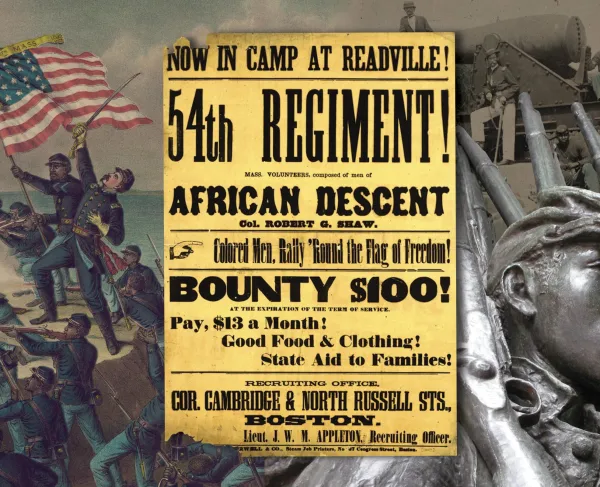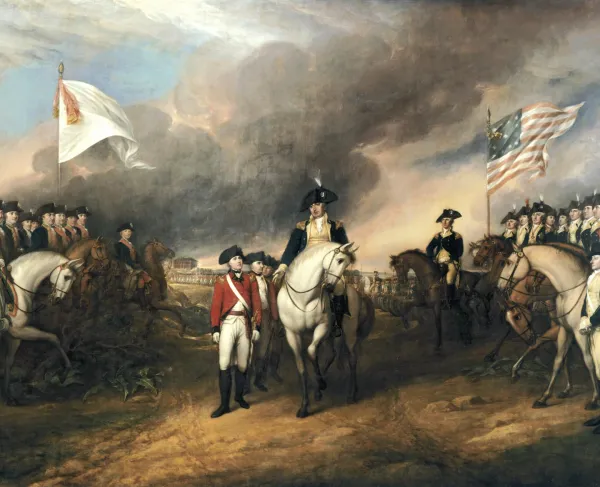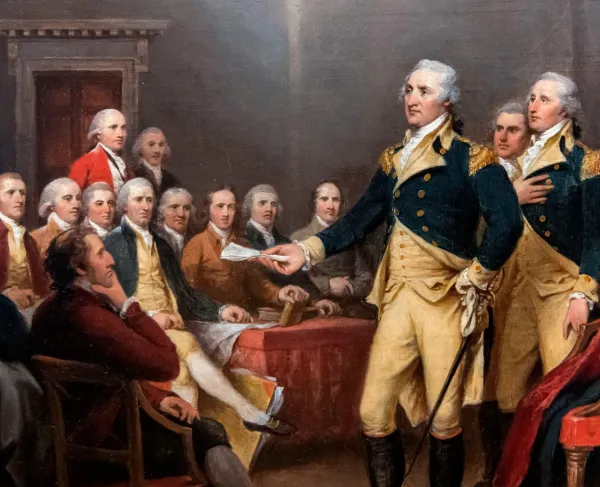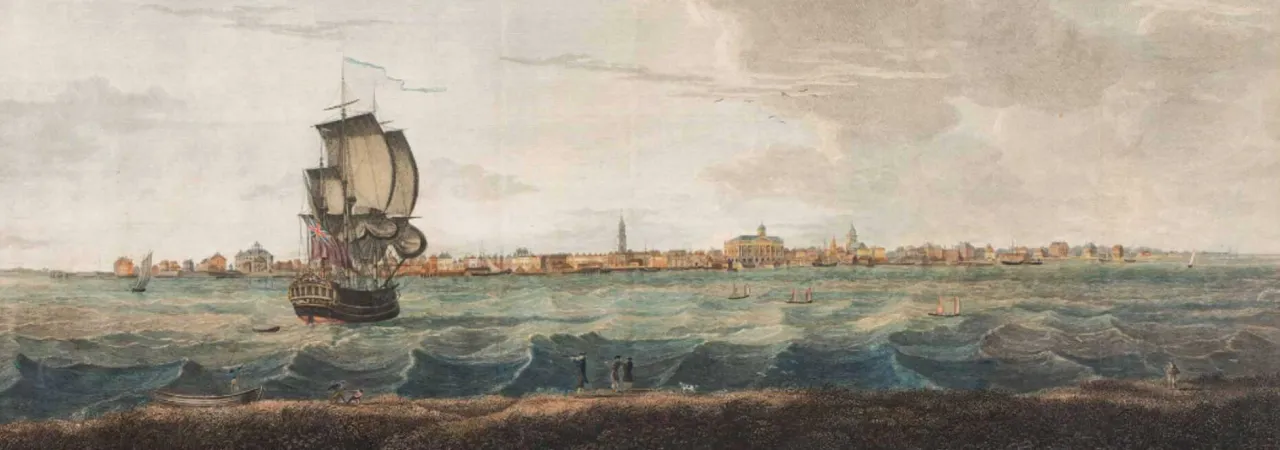
A view of Charles-Town, the capital of South Carolina / painted by Thos. Leitch ; engraved by Saml. Smith.
The city of Charleston sits at the end of a peninsula where the Ashley and Cooper Rivers meet and empty into Charleston harbor and the Atlantic Ocean. To the south are James and Johns Islands, and to the east of the city is Mount Pleasant. At the entrance of Charleston harbor is Morris Island on the southern side and Sullivan’s Island on the northern side.
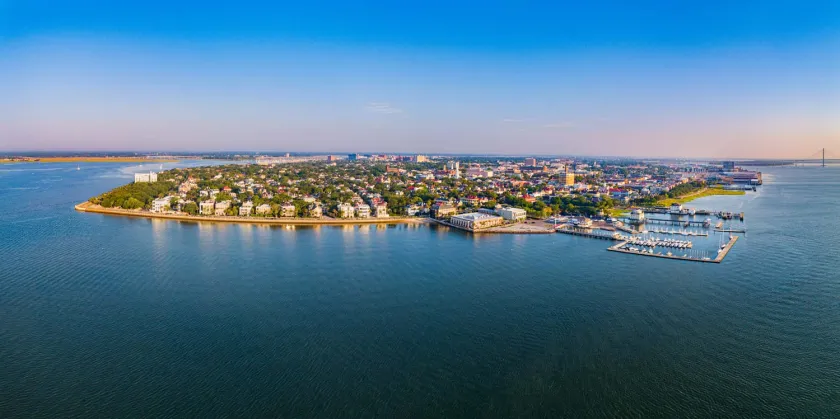
The harbor was first used by English settlers in the year 1670 when they established Charles Town off the Ashley River. Named for King Charles II, the settlers lived at this Charles Towne until 1680, when they moved onto the peninsula at what was known as Oyster Point. This new location for Charles Town was more desirable because of its proximity to the natural harbor. They developed a colonial walled city and used the harbor for trade. The port city soon became very prosperous and wealthy, thanks largely to the large rice plantations that rose around the city.
As a large and prosperous port city, the harbor became a tantalizing target for foreign enemies and pirates. In 1706 a French and Spanish force attacked the city but was driven back by the Charles Town militia. In 1708, the main colonial fortification for the harbor was built on James Island, Fort Johnson. In 1718, the famous pirate Blackbeard laid siege on the city from the harbor in order to receive medicine for his pirates.
When not seeing conflict, the harbor continued to be the center of trade for the city. Charleston was one of the most prosperous and wealthiest cities in the colonies prior to the Revolutionary War. In addition to rice and indigo, slavery soon became a major commodity in the Charleston harbor. First, were Indian slaves, but eventually the African slave trade became a major source of trade. A large percentage of the transatlantic slave trade that went to what was the thirteen American colonies ended up at Charleston.
During the American Revolution, Charleston harbor became the center of major events of the war. Defending the city on James Island was Fort Johnson, where the first flag of liberty in South Carolina was raised in 1775. On the northern side was Sullivan’s where a large palmetto fort was under construction in 1776 when it was attacked by the British Navy. The Battle of Sullivan’s Island on June 28, 1776 was a major Patriot victory as the South Carolinians drove the British away thanks to the palmetto log fort they had hastily constructed that was later renamed Fort Moultrie. The British returned in 1780 and laid siege to the city of Charleston. This time the British Navy made it into the harbor as the British army cut the Americans off by land. On May 12, 1780 more than 5,000 American soldiers surrendered to the British in the worst defeat of the war for the Americans. More than two years passed before the Americans liberated the city in December of 1782.
Following the Revolutionary War, the port continued to prosper and make Charlestonians and South Carolinians very wealthy. In 1791, President George Washington visited Charleston. During his stay in the city, he took a harbor tour where he said to Fort Johnson and Fort Moultrie to visit locations that saw action during the Revolutionary War.
In 1810, another fortification was built in the harbor on a spit of land near downtown called Shute’s Folly. This fort was named Castle Pinckney. In 1829 a major fort began to be constructed at the entrance of Charleston Harbor on a sand bar not far from Fort Moultrie. This brick and stone fort would be named Fort Sumter and was still under construction in 1860.
Charleston harbor was the scene of the dramatic beginning of the American Civil War in 1860 and 1861. It was in Charleston where South Carolina delegates seceded from the Union in December of 1860. Major Robert Anderson and a small contingent of United States soldiers stationed at Fort Moultrie spiked their cannon and moved from Moultrie into the harbor and the unfinished Fort Sumter. Over the following months, South Carolina troops occupied all the surrounding locations in the harbor and built fortifications and trained artillery at federal garrison at Fort Sumter. At 4:30 a.m. on April 12, 1861, the first shot of the American Civil War was fired from Fort Johnson at Fort Sumter. A 34-hour bombardment ensued which resulted in no deaths, and the surrender of the United States garrison. Confederate forces took Fort Sumter.
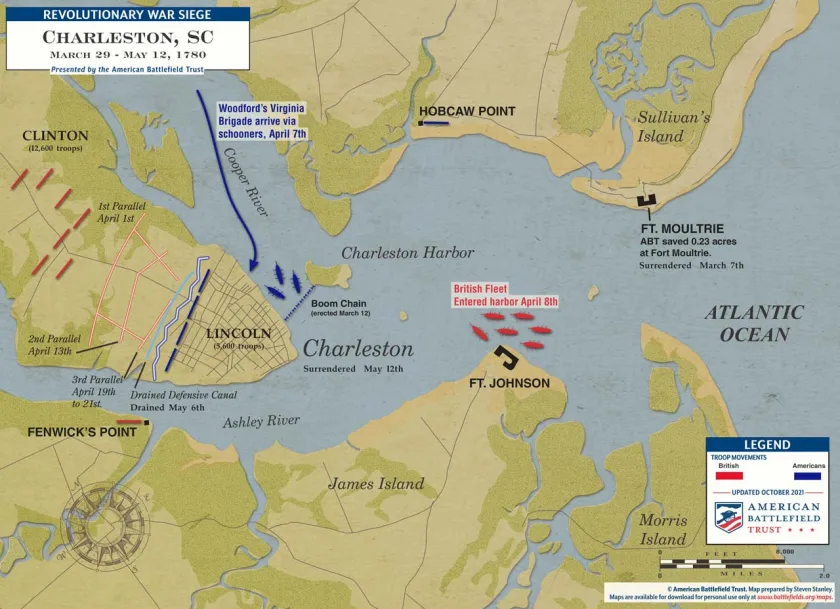
After the beginning of the war, Union ships set up a blockade outside of Charleston Harbor. The Union focused on Charleston as an important strategic port and a symbolic prize. After an attempt to attack Charleston by land failed at the Battle of Secessionville, in April of 1863 the Union attacked Charleston and Fort Sumter with an ironclad attack but was repulsed. Beginning in the summer of 1863, the Union laid siege to the city and harbor. Despite repulsing Union assaults on Battery Wagner on Morris Island, by the fall, the Confederates pulled back closer to the harbor. With a base of operations on Morris Island, the Union army pummeled Fort Sumter and Charleston with massive bombardments. Over the course of the siege, nearly seven million pounds of artillery projectiles were fired at Fort Sumter, resulted in its near total destruction. Despite this, the Confederates remained defiant and never gave up the fort or the harbor. It was not until General William T. Sherman and his Union army was cutting through the interior of South Carolina that Confederate forces evacuated the harbor. Union soldiers took Charleston and the harbor. In April of 1865, a symbolic reraising of the American flag took place at Fort Sumter.
Following the Civil War, the harbor returned to its center of trade. It continues to this day being an important port city, as well as popular tourist destination with cruise ships and daily boat tours to and from Fort Sumter.
Related Battles
37
220
5,506
258
685
204
1,515
174

